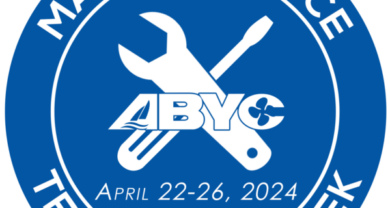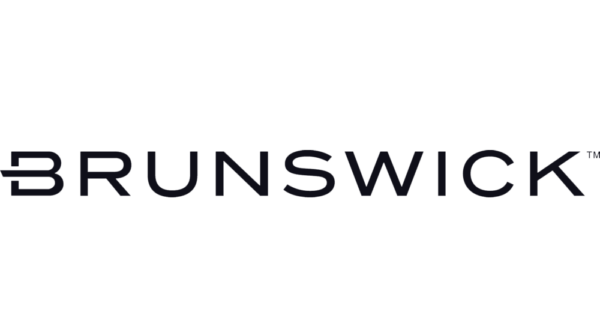Money in the bank
Experts in the marine industry haven’t seen any reason to uncork the champagne in 2007 since a sluggish sales year is forecast. Analysts who watch the industry to track its publicly traded companies see strong demand from the luxury segment, but that bright spot more than dims in the wake of anemic sales.
Sales in the fourth quarter 2006 were weak, and the early boat show season has been disappointing. However, marine industry consultants and those in the finance and insurance segment point to continued lower fuel prices, stable interest rates and a warmer-than-normal winter as reasons to remain positive entering the prime ’07 sales months.
One way that marine dealers can improve profits is through a robust F&I function, either by employing a dedicated F&I person or by using an outsourcer to provide those services. Estimates vary widely as to how many dealers have an effective F&I department, but the general consensus is that F&I can bring in an average of 2 percent to 4 percent of a dealer’s new and used boat sales. Depending on dealership size and product mix, some stores can fetch 7 percent from an F&I department.
“For a dealership doing $10 million in boat sales, that’s $200,000 to $400,000 that goes directly to your bottom line,” says David Parker, president of marine consulting firm Parker Business Planning Inc. “If you want to give that up, it’s your choice, but I believe it’s something that every marine dealer should be doing.”
The Orlando-Fla.-based firm also moderates marine 20 Groups, and Parker says that discussions about F&I take place at most meetings because of its importance to dealer profits.
F&I a Specialized Job Function
The benefits of F&I are interrelated and often complex, which is why most in the industry stress that a dealer’s top sales manager isn’t the likely choice to head an F&I department. In addition to the profits generated by closing more boat sales, other opportunities for profit include document preparation fees that range from $195 to $395 or higher, extended warranties and potential markups on interest rates. Parker says he knows of one dealership that makes an extra $40,000 a year on document prep fees alone.
John Fulmer, sales executive for the specialty group at Bank of America that includes the marine segment, estimates that a majority of dealers use a service company for the F&I function. However, Kevin von Busch, senior vice president national retail sales manager at Cleveland-based KeyBank, believes that 70 percent of dealerships have a dedicated finance person, and another 10 percent use a service company. In any case, a significant number of dealers are letting potential customers leave the dealership to secure financing, which can result in wasted efforts for sales that don’t close because the dealer didn’t control the financing function.
“If you think about a dealership’s new and used finance penetration, about 60 percent get financing – that’s your opportunity,” says von Busch. “If 60 percent of your sales are financed and you get 2 percent profit from F&I, that’s your general opportunity.”
With potential profits such as this, it makes sense for dealers to employ a dedicated F&I person who has been trained to work with buyers to find financing instruments that fit their needs, knows how to upsell and keeps up with the proper paperwork and disclosures.
First, however, dealer principals need to make F&I a focus of their business, says Peggy Bodenreider, senior manager, marine sales at GE Money. “Management must make a commitment to put greater emphasis on F&I. This may involve some investment in equipment and training.” Then, she continues, “F&I should be treated as a profit center, with a variety of products and services that can be sold. Once properly equipped and trained, the F&I department can help generate added revenue and enhance the sales and customer service experience by providing excellent support to the sales team and the consumer.”
Process Becoming Easier
The nuts and bolts of F&I have become easier because of companies such as Curomax that offer online applications to automate the process, allow the same application to be sent to multiple lenders and generate the appropriate paperwork for each lender. Curomax, based in Mississauga, Ontario, Canada, works with nearly two dozen leading lenders and counts many marine dealerships among its clients.
“The minute you let someone find their own financing, you are allowing an opportunity for that person to have a bad experience with the financing process,” von Busch says. “If you control the process from start to finish, you’re controlling the customer service process.”
But transferring the burden of working with customers and lenders to obtain loan approvals and close deals to a third party may actually increase customer satisfaction, says Jared Zimlin, business development director at Priority One Financial Services Inc., St. Petersburg, Fla. “The dealer is there to sell fun, and talking about bankruptcies and credit histories with someone you’ve just sold a boat to certainly isn’t fun,” Zimlin says. “From a CSI standpoint, there’s a benefit to having a consistent, professional outsider take any black clouds out of the picture. Any negatives around the process are left with us.” In addition to discussing credit issues, F&I providers also can keep dealers compliant with disclosure regulations.
While most in the F&I industry are anticipating a flat sales year at best, Priority One believes it can help its dealers sell more boats because of new services and new technology. Zimlin says that with an outsourcer such as Priority One, F&I can be the highest profit center in the dealership, with no money tied up in inventory or salaries for sales and financing employees.
Zimlin wants to dispel the common misperception of F&I being a shady part of the boat-buying process. “We don’t want to turn people upside down and shake the coins out of their pockets,” Zimlin says. “Getting the boat delivered (which includes loan approval) is one of the hardest parts of the sales process, and if a dealer can just sell one more boat a month, imagine how much more money he’d make.”
A dealer must weigh the benefits of hiring an F&I service company vs. doing the job in-house, says Bank of America’s Fulmer, looking at myriad factors including dealership boat sales volume, the timeliness of loan approvals, personnel costs, training costs and the overhead required to run the department. What makes perfect sense for one dealership may not work at another, and the answer will be different in each instance.
Dennis L. Hamilton, president of DealerLinx at Assurant Solutions, notes that marine dealers are running four businesses (sales, F&I, service and parts) under one roof and that few can be masters of all four. “With seasonality, dealers are forced to keep head counts down, forcing them into multi-tasking remaining staff,” Hamilton says. “The first question to answer is, ‘Do I want to do this myself, or should I consider outsourcing?’” Factors involved in that decision include a dealership’s personnel, its facility, its ability to invest in F&I services and the desires of the owners.
Parker stresses that a robust F&I department indicates a dealership that’s in a growth mode, the best quadrant of the four modes of business that Parker uses extensively in his consulting work. Think of a square in four segments. Categories clockwise from the upper left are growth, trouble, know-it-all and even-keeled. “We all drift in and out of these more than once,” Parker says, “but unless dealers mentally choose the growth mode and stay there, they’ll wind up in trouble.”
According to the experts, those who aren’t already offering F&I should be and those who are offering the service should make sure they are deriving maximum profits from it. In a year when sales are expected to be flat, any increase in profits would be welcome news, indeed. — Matt Bolch




